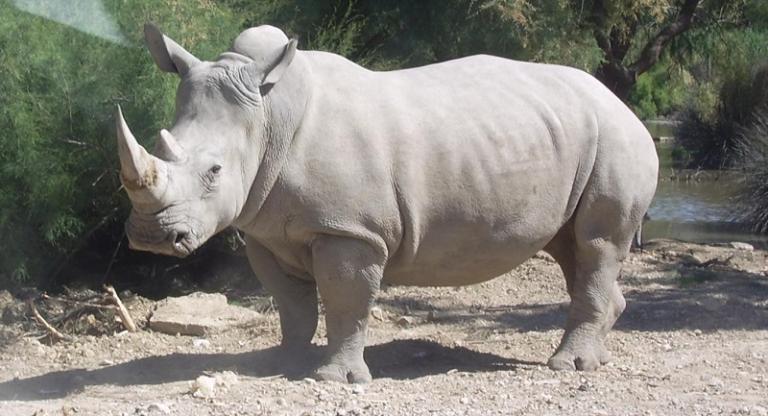 It sounds like something straight out of science fiction, but science may allow mankind to reverse the extinction of the northern white rhino. At the moment, there are only two northern white rhinos left in the world, and both of them are female. The last male, named Sudan, died in Kenya in March of 2018, but scientists hope that new INF techniques could save the species. The plan is to use southern white rhinos as surrogate mothers to carry northern white rhino embryos. Far-fetched as it may sound, the technology is very real, and scientists have already managed to create a northern white rhino embryo in a laboratory.
It sounds like something straight out of science fiction, but science may allow mankind to reverse the extinction of the northern white rhino. At the moment, there are only two northern white rhinos left in the world, and both of them are female. The last male, named Sudan, died in Kenya in March of 2018, but scientists hope that new INF techniques could save the species. The plan is to use southern white rhinos as surrogate mothers to carry northern white rhino embryos. Far-fetched as it may sound, the technology is very real, and scientists have already managed to create a northern white rhino embryo in a laboratory.
There are numerous practical questions that need to be considered. One of the largest is that, even if the INF techniques create healthy northern white rhino calves, the revived species may suffer from a crippling lack of genetic diversity. There is also the fact that collecting the necessary eggs from the surviving female northern white rhinos is risky and will require the rhinos to be sedated for two long hours.
Unsurprisingly, ethical concerns have already been raised. Captive breeding has been largely accepted, but the use of new and largely experimental medical technology has created a sense of wariness. This is especially true given that INF has promised incredible results for endangered or extinct species in the past, but it has rarely delivered. Only the giant panda, Asian elephant and black-footed ferret have ever profited from human intervention in the reproductive cycle. Even if the technique worked, there is no guarantee that the revived species would survive for long. The lack of genetic diversity would lead to inbreeding depression and an extreme susceptibility to disease. There is every possibility that INF would only preserve the northern white rhino for another generation or two.
Even so, there are many people who feel that the INF technique should be given a chance. The northern white rhino, people argue, is not essentially extinct because it failed to adapt to its natural environment. It has been driven to the brink by habitat destruction, poaching and human civil wars. Humans have killed the species, the argument goes. Humans have a responsibility to try and bring it back.
The debate is far from settled, but it is likely that the project will move forward regardless of moral concerns. There simply is not time for the ethics to be considered, debated, reconsidered and then agreed upon. By the time all the would-be philosophers have decided if the INF project is ethical, the last two northern white rhinos would likely already be dead and the species doomed regardless.
One thing to consider, however, is what happens if the project succeeds. Should the project fail, the northern white rhino will die off entirely. If the project succeeds, however, any number of endangered species could potentially make a comeback. The question, however, is whether mankind will be content to stop at saving endangered species or if scientists will try to resurrect the long extinct. Precedent is a powerful thing, and while saving the northern white rhino is noble, no one really wants to deal with a real-life Jurassic Park because someone decided to bring back the dinosaurs.


